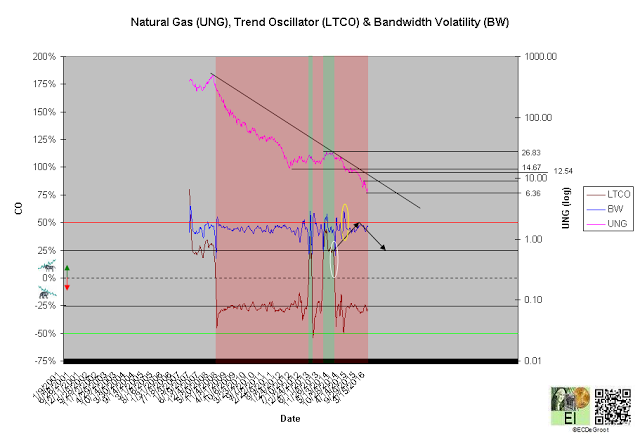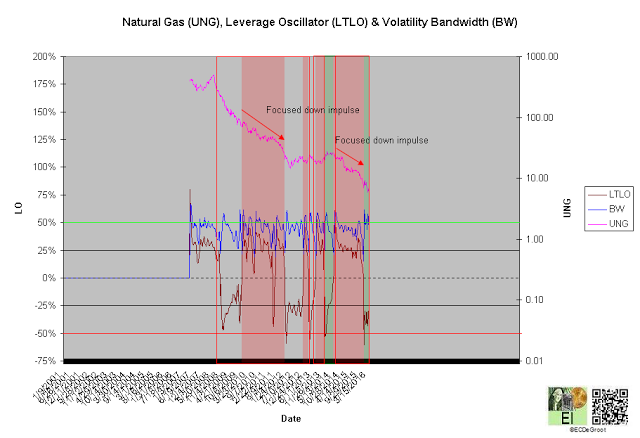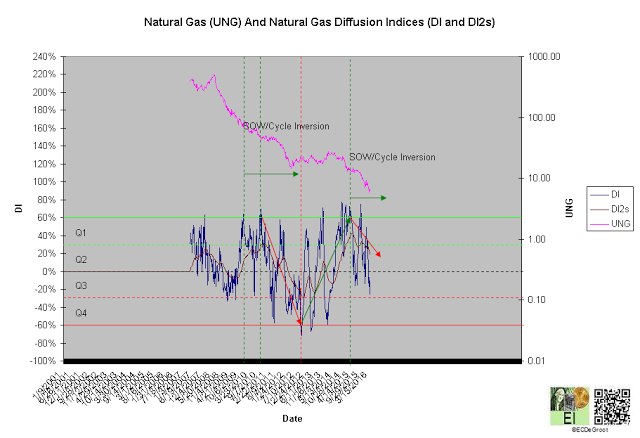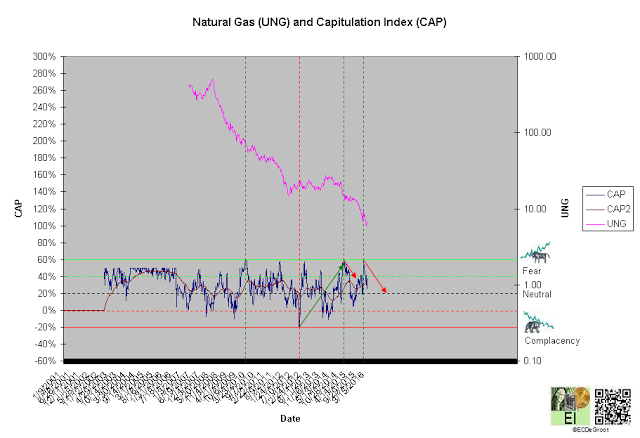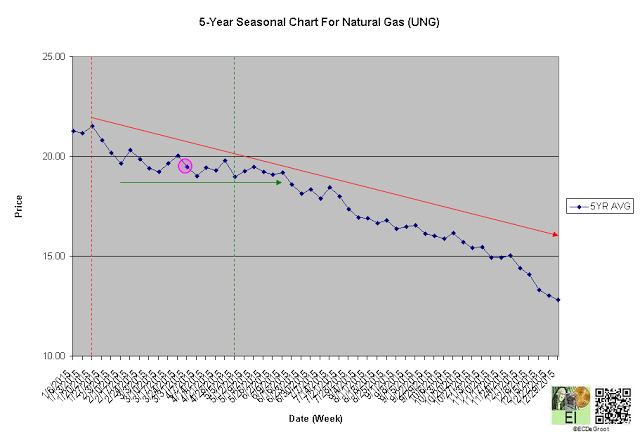Bearish fundamentals, growing stock piles of natural gas consistently above their one and five-year averages, have been supporting mark down in natural gas (NG) for years. While natural gas's trend is often discussed in terms of supply and demand or 'the fundamentals', a minority of independent thinkers recognize that it's also defined by human behavior.
Investors, largely driven by emotions rather than discipline, tend to focus on volatility rather than the message of the market. This tendency prevents them from recognizing better opportunities in quieter markets.
Summary
The BEAR (Price) and BULL (Leverage) trends under Q2 accumulation during seasonal strength position natural gas (NG) as consolidation/profit-taking against an aging bear opportunity.
Price
Subscriber Comments
Show
Interactive Charts: United States Natural Gas (NYSE:UNG), UNG PF, $NATGAS
A negative long-term trend oscillator (LTCO) defines a down impulse from 20.83 to 6.40 since the fourth week of July 2014 (chart 1). The bears control the trend until reversed by a bullish crossover. Compression, the third phase of the CEC cycle marked by white circles, generally anticipates this change.
A close above 14.67 jumps the creek and transitions the trend from mark down to cause.
Chart 1
Leverage
A negative long-term leverage oscillator (LTLO) defines a bull phase since the third week of December (chart 2). The bull phase, a conflicting message from the leadership of leverage and price, suggests consolidation/profit-taking against the down impulse (see price).
A diffusion index (DI) of -11% defines fading Q2 accumulation (chart 3). A capitulation index (CAP) of 38% supports this message (chart 4). DI and CAP's trends, broader flows of leverage and sentiment from extreme accumulation (green dotted line) to distribution and extreme fear (green dotted line) to complacency supporting the bulls (red arrows), should not only continue to extreme concentrations but also restrain downside expectations until reversed (see price). Continuation of the decline under these trends, a sign of weakness (SOW)/cycle inversion, would be bearish for NG longer-term (chart 3).
Chart 2
Chart 3
Chart 4
Time/Cycle
The 5-year seasonal cycle defines 'strength' from February to June (chart 5). This path of least resistance restrains downside expectations (see price).
Chart 5

